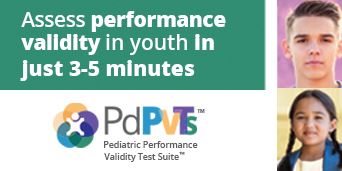November Lecture Series
Thank you to all who attended Dr. Goldstein's lecture on co-morbid disorders in children.
And a special thank you for our Washoe participants who stuck it out while we battled technological difficulties! You can find a link to Dr. Goldstein's lecture on his website.
.jpg)
Thank you for your interest in the November Lecture Series. We are happy to welcome back Dr. Sam Goldstein. Please visit his website for more details on his amazing accomplishments.
School psychologists are increasingly faced with the evaluation of students demonstrating symptoms, behaviors and impairments characteristic of multiple mental health disorders and IDEIA/ADA eligibilities. For example, children with autism typically suffer from two additional psychiatric disorders such as ADHD, Oppositional Defiance or a specific learning disability. Children with anxiety, depression and learning disability typically suffer from one or two additional disorders. Three out of ten leading causes of disability in children and young adults are mental disorders and the other causes are often associated with mental disorders. Further, more than half of children with mental health disorders typically suffer from some type of medical condition. Among children in foster care, more than half experience diagnosed mental health disorders. Retrospective and prospective research has shown that most adult mental and developmental disorders begin in childhood and adolescence. Results of current studies indicate that about one out of every three to four youth is estimated to experience a mental health or developmental disorder. School psychologists are increasingly confronted not only with evaluating these children, but also guiding eligibility determination, development of IEPs, implementation and progress monitoring.
In this presentation, Dr. Goldstein will review the literature demonstrating the increasing presentation of students meeting multiple diagnostic and eligibility criteria, discuss the prevalence and correlates of various disorders as they present in children and review the risk factors associated with increased vulnerability. He will then offer a comprehensive framework to assist school psychologists in evaluating the development, emotions, behavior and social relations of complex students utilizing valid and reliable behavioral, observer and self-report scales and tests. He will provide a means of understanding and integrating data to assist in developing IEP goals, implementation and progress monitoring.
Learning Objectives
- Participants will develop a current understanding of childhood developmental and mental disorders and co-morbidity.
- Participants will develop a current understanding of IDEIA eligibility criteria and youth meeting multiple eligibilities.
- Participants will learn a neuropsychological perspective to understand children’s learning, behavior and development.
- Participants will learn a practical framework including methods and tools to assess children presenting with possible multiple eligibilities.
- Participants will learn a method to educate IEP team members about assessment results to facilitate appropriate placement, services and goals.
School psychologists will receive 6 NASP-approved credits for attendance.
**This is a full day workshop with a 30-minute lunch break**
Please bring a packed lunch.
Sandwiches from Jason's Deli will be provided for additional charge (see registration for options).
Reno Participants: lunch will be order from Full Belly Deli. Please choose lunch included option if interested then contact Emma Dickinson for lunch options.
UNLV - Bennett Professional Development Center (BDC), Room 112
The lecture will live-stream to our participants in Reno, NV.
Reno viewing will take place at Depoali Middle School, Room 110
Brief References
Child Mind Institute (2015). Children’s Mental Health Report. www.Childmind.org/report.
Druss, B.G. & Walker, E.R. (2011). Mental disorders and medical comorbiditiy. The Robert Wood Johnson Foundation, ISSN 2155-3718.
Kessler, R.C., et al. (2005). Prevalence varied in comorbidity of twelve month DSM-IV disorders in the National Co-morbidity Survey Replication. Archives of General Psychiatry, 62, 617-627.
Lehmann, S., et al. (2013). Mental disorders in foster children: A study of prevalence, co-morbidity and risk factors in adolescent psychiatry and mental health. Open Access Journal,
Merikangas, K.R., et al. (2009). Epidemiology of mental disorders in children and adolescents. Dialogues in Clinical Neuroscience, 11, 72-20.
Siminoff, E., et al. (2008). Psychiatric disorders in children with Autism Spectrum Disorders: Prevalence, co=morbidity and associated factors in a population-derived sample. Journal of the American Academy of Child and Adolescent Psychiatry, 8, 921-929.

